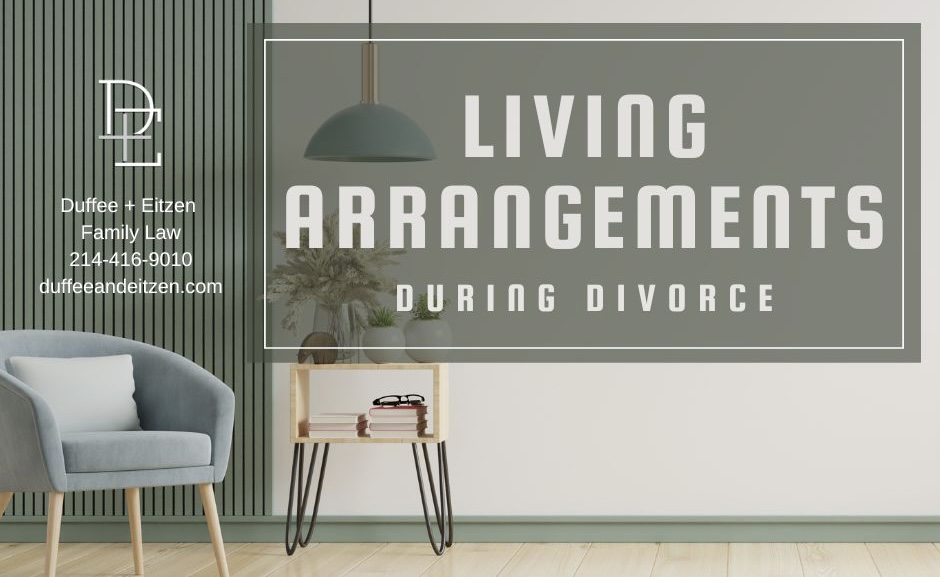Living Arrangements During the Divorce Process

- Written by Duffee + Eitzen
- Categorised Divorce
Always a hot button topic: living arrangements during the divorce process. Sometimes spouses decide to continue to live in the same house during the divorce process, usually in an effort to save money. However, living together during the divorce process is very difficult. Sometimes it is important to step back and look at the big picture. As living together becomes more difficult and communication breakdowns occur, it may end up costing more in legal fees and have a negative impact on the ultimate settlement. In addition, continued fighting and miscommunication can negatively affect the children’s experience and is emotionally draining.
If you do decide to live together during the process, it is important to establish ground rules. Meeting with a mental health professional may be an efficient way to establish ground rules and boundaries. Also, it is best not to discuss the case at home.
Think Twice About Keeping the House
One of the biggest mistakes we see is when one spouse, usually the wife, insists that he or she must keep the house.
The most common reason that a spouse may want to keep the house is for the stability of the children. Other reasons may include that it is a tangible asset which is easy to understand, not wanting to give others the impression that you were kicked out of the house, and the misconception that a house is a good investment because prices always go up.
The person wanting to keep the house often does not realize how expensive it is to maintain. A house can be a cash flow drain. Recurring expenses include the mortgage, electric, gas, water, trash, phone, internet, cable, pest service, alarm monitoring, and lawn treatment. The big recurring items are property taxes and insurance.
Some people also hire professionals to clean the house, mow the yard, maintain the landscape, and clean the pool. And then there is the big stuff that comes up. The house needs a new roof, new air conditioner, exterior painting, a plumber, tree trimming, fence repair, etc. The regular monthly expenses are one thing, but the big unexpected items can be financially crippling.
Remember that the family income that has been supporting one household will now be supporting two households. Each spouse needs a comfortable, but reasonably priced place to live.
If you still really want to keep the house, start doing your homework.
Make a very detailed list of all the recurring monthly and quarterly expenses. Find out the average cost of each item over the last 12 months. Think about the tasks that your spouse does which you may now need to hire someone to do (i.e. lawn mowing, house cleaning, etc.). Then make a list of the occasional big expensive things that come up when you own a home. If needed, talk to parents, neighbors, or others to get their input on big-ticket items that you may be forgetting.
Once you have gathered all of this information, calculate the average monthly cost of maintaining the home. Factor that number into your overall thought process about what makes sense for the divorce settlement.
If the cost of maintaining the current home is daunting, brainstorm other options to accomplish the same goal. If you want your children to attend the same school, consider other less expensive homes in the area that may be for sale. Consider renting a house in the area. Renting relieves some of the cost burden because you are not responsible for the big repairs and maintenance. It also gives you the freedom to move when your lease is up. It is much easier to pay the penalty to break a lease than it is to try to sell your house.
If the reason you want to keep the house is because it is paid off and you want the security of knowing you have somewhere to live for the rest of your life, consider whether this house is the right answer for you or if it makes more sense to downsize to a house that is more affordable for the long term. If you want to keep the house to hold on to the memories or because you do not want to let go of the idea of your family being intact, talk through these thoughts with your counselor and brainstorm other ways to keep those memories.
Melinda Hartman Eitzen is a partner at Duffee+Eitzen. She can be reached at melinda@d-elaw.com
If you enjoyed this article, Living Arrangements During the Divorce Process, you can read more on this topic in the book CONSIDERING DIVORCE? CRITICAL THINGS YOU NEED TO KNOW, by Melinda Eitzen, JD, Joanna Jadlow, CPA, CFP®, CDFATM& Brenda Lee Roberts, M. Ed. LPC

Contact Us